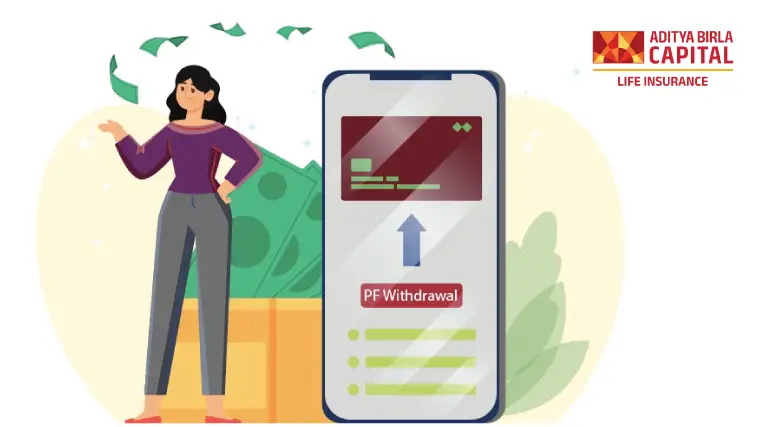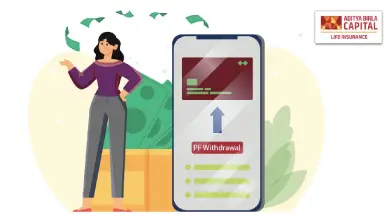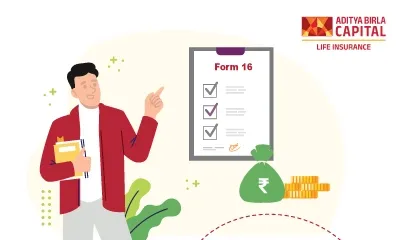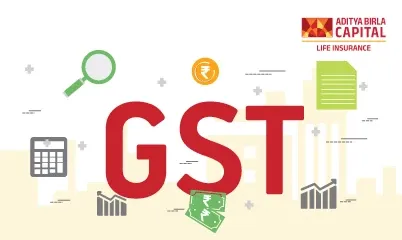Are you planning to withdraw your Provident Fund (PF) and wondering how the process works in 2024? Whether it’s for a major purchase, a financial emergency, or transitioning into retirement, understanding how to access your hard-earned savings in the Employee Provident Fund (EPF) is essential. Let’s simplify the PF withdrawal process, clarifying what a PF claim is and how you can conveniently apply for it online.
What Exactly is a PF Claim or Withdrawal?
A PF claim or withdrawal refers to the process of accessing the funds that you have accumulated in your Employee Provident Fund (EPF) account:
- Purpose:
PF withdrawal is typically done in case of retirement, unemployment, or when
you need funds for specific purposes like medical emergencies, higher education, or
house purchase.
- Eligibility:
Different conditions apply for partial and full withdrawal. Full withdrawal is
usually allowed upon reaching retirement age or under certain circumstances like
unemployment for more than two months.
- Components:
Your EPF account comprises contributions from both you and your
employer, along with the accrued interest.
How to Apply for PF Withdrawal
Applying for PF withdrawal in 2024 is largely an online process, making it convenient and userfriendly. Here’s how to do it:
- Access UAN Member Portal:
Log in to the UAN (Universal Account Number) Member
Portal. Your UAN should be activated, and the mobile number used for activation should
be active.
- Link Aadhaar and PAN:
Ensure your Aadhaar and PAN are linked to your UAN. This is
mandatory for online claims.
- Complete KYC:
Your KYC details, including bank account information, must be correct
and verified by your employer.
- Select the Claim Form:
Under the 'Online Services' tab, select ‘Claim (Form-31, 19 &
10C)' from the dropdown menu.
- Enter Details:
Follow the instructions and fill in the necessary details required for the type
of withdrawal you are claiming.
- Authenticate with Aadhaar OTP:
Submit your claim by authenticating it with an OTP sent
to the mobile number linked to your Aadhaar.
- Track Claim Status:
After submission, you can track the status of your claim through the
portal
- Direct Transfer to Bank Account:
Once approved, the PF amount will be transferred
directly to your linked bank account.
Remember, while online withdrawal is convenient, it’s important to consider the long-term implications of withdrawing your PF savings and to understand the tax implications, if any.
How to Withdraw PF Amount with UAN
Withdrawing your Provident Fund (PF) amount using your Universal Account Number (UAN) is a straightforward online process:
- Log into UAN Portal:
Access the UAN Member e-Sewa portal using your UAN and
password.
- Verify KYC Details:
Ensure that your KYC details, particularly your Aadhaar, PAN, and
bank account details, are updated and verified.
- Select the Withdrawal Option:
Navigate to the 'Online Services' tab and choose the
'Claim (Form-31, 19 & 10C)' option from the drop-down menu.
- Fill the Claim Form:
Enter the required details in the claim form. The system will use your
KYC details to auto-populate various fields.
- Submit the Application:
After filling in the details, submit your claim. You'll need to
authenticate the process using an OTP sent to your Aadhaar-linked mobile number.
- Track Your Claim:
Post submission, you can track the status of your claim through the
'Track Claim Status' link under the 'Online Services' tab.
How to EPF Withdrawal without UAN
EPF withdrawal without UAN is typically a more manual process:
- Download the EPF Withdrawal Form:
Download the non-UAN based EPF withdrawal
form (Form 19, 10C, 31, or a composite claim form) from the EPFO website.
- Fill the Form:
Complete the form with all required details, including your PF account
number, bank details, and other relevant information.
- Attestation:
Get the form attested by your employer. This is crucial as it verifies your
employment and authenticity.
- Submission:
Submit the completed form along with the required documents to the
regional EPFO office.
- Verification and Processing:
The EPFO will verify your details and process the claim
accordingly. This process may take longer than online claims.
Steps to Apply for EPF Withdrawal Online on UAN Portal
Applying for EPF withdrawal online via the UAN portal involves the following steps:
- Step 1: Access UAN Portal:
Visit the UAN Member e-Sewa portal and log in using your UAN
and password.
- Step 2: Verify KYC Details:
Ensure your Aadhaar, PAN, and bank details are linked and verified
on the portal.
- Step 3: Claim Withdrawal:
Go to the 'Online Services' tab and select ‘Claim (Form-31, 19 &
10C)’.
- Step 4: Enter Details for Claim:
Fill in the form by entering relevant details and the reason for
the PF withdrawal.
- Step 5: Authenticate and Submit:
Complete the process with an Aadhaar OTP verification.
- Step 6: Confirmation and Tracking:
After submission, you will receive a confirmation. You can
track the claim status online.
Remember, withdrawing PF funds can impact your retirement savings, so consider your longterm financial health before proceeding.
New EPF Withdrawal Rules 2024
As of 2024, there may have been updates or changes to the EPF withdrawal rules. While specific details should be verified with the latest official sources, here are some general aspects that might be included under new rules:
- Tenure for Full Withdrawal:
The requirement for the minimum service period for full EPF
withdrawal might have specific updates or remain the same at 5 years of continuous
service.
- Partial Withdrawals:
Rules regarding partial withdrawals for specific purposes like
medical emergencies, home loans, education, etc., might have new limits or conditions.
- Taxation:
There could be changes in the tax implications on withdrawal amounts,
especially for early withdrawals.
- Retirement Age:
Any updates to the retirement age could affect the age at which you can
withdraw your EPF without any deductions.
- Online Withdrawal Process:
Enhanced digital processes for EPF withdrawal might be in
place, offering more streamlined and user-friendly procedures.
How Long Does It Take for the PF Claim to Be Deposited into an Account?
The time taken for a PF claim to be deposited into an account can vary:
- Typical Timeline:
Generally, once a claim is submitted, it takes about 15-20 days for the
PF amount to be credited to the account. However, this can vary based on the workload
of the EPFO office and the correctness of the submitted details.
- Digital Advancements:
With digital advancements and improvements in EPFO's
processing capabilities, this duration might be reduced.
How to Check the Status of an EPF Claim?
Checking the status of your EPF claim is straightforward and can be done online:
- Visit EPFO Portal:
Go to the EPFO website or the UAN Member e-Sewa portal.
- Login with UAN:
Log in using your UAN and password.
- Select 'Track Claim Status':
Under the 'Online Services' tab, choose 'Track Claim
Status'.
- View Status:
You will be able to see the status of your claim, such as under process,
approved, or payment sent.
- SMS/Email Notifications:
You may also receive notifications via SMS or email regarding
the status of your claim.
Regularly checking the status will keep you updated on the progress of your claim and let you know if any further action is needed from your side.
Documents Required for EPF Withdrawal
To withdraw funds from your Employee Provident Fund (EPF), you'll need to furnish the following documents:
- Composite Claim Form:
This is required for both online and offline withdrawals. For
online, it's filled digitally, and for offline, it needs to be submitted in hard copy.
- UAN:
Your Universal Account Number should be activated, and KYC details should be
verified and linked with it.
- Bank Account Details:
A cancelled cheque or bank passbook copy to ensure the
payment goes into the correct account.
- Identity and Address Proofs:
Though not always mandatory, they might be required in
some cases.
- Aadhaar Card:
For easy and faster processing of your claim.
- PAN Card:
Particularly if the service is less than 5 years to handle TDS implications.
Note: In most cases, if your KYC and UAN are linked, and you're applying online, the need for physical documentation is greatly reduced.
Complete Withdrawal
Complete withdrawal from EPF can be made under certain conditions:
- Retirement:
On retirement from service after attaining 58 years of age.
- Unemployment:
If unemployed for more than 2 months. A certificate of unemployment
may be required.
- Other Circumstances:
In case of migration abroad for permanent settlement or total
disability.
Partial Withdrawal
Partial withdrawals or advances from EPF are permitted under specific circumstances, each with its own conditions and limits:
| Reason for Withdrawal | Service Requirement | Details |
|---|
| Medical Treatment | No minimum | For the treatment of the account holder,
spouse, children, or parents. |
|---|
| Marriage or Education | 7 years | For the marriage of self, sibling, or children,
or for the education of self or children. |
|---|
|
| Home Loan Repayment | 10 years | For repayment of a home loan. |
|---|
| Purchase or
Construction of House | 5 years | For buying or constructing a house or plot. |
|---|
| Home Renovation | 5 years | For renovation or alteration of an existing
home. |
|---|
| Pre-retirement | Age 57 | Withdrawal up to 90% of the total PF
balance is allowed. |
|---|
Each of these partial withdrawals has its own set of rules regarding the amount that can be withdrawn and the documentation required.
EPF Withdrawal Taxability
Complete withdrawal from EPF can be made under certain conditions:
- Tax-Free Withdrawals:
EPF withdrawals are tax-free if you withdraw after 5 years of
continuous service.
- Withdrawals Before 5 Years:
If you withdraw before completing 5 years of service, the
amount becomes taxable in the year of withdrawal.
- TDS on Early Withdrawal:
TDS (Tax Deducted at Source) is applicable at 10% if PAN is
submitted; otherwise, it's 30%. TDS applies if the withdrawal amount is more than ₹50,000
before 5 years of service.
- Exemption in Certain Cases:
Withdrawals due to unemployment caused by ill health or
company closure are exempt from tax, even if they occur before 5 years.
Types of PF Claim Forms and Details
There are different types of PF claim forms, each serving a specific purpose:
- Form 19:
For final PF settlement. Can be used after leaving a job, retirement, or
termination.
- Form 10C:
To withdraw funds from the Pension Fund Scheme. Applicable if you have not
completed 10 years of eligible service.
- Form 31:
For partial withdrawals/advances from PF for specific purposes like medical
treatment, home loan repayment, etc.
- Composite Claim Form:
A single form that has replaced Forms 19, 10C, and 31 for online
applications.
All Form Download URLs You Might Need
Mistakes to Avoid While Filing a PF Claim
Avoiding common mistakes can ensure a smoother claim process:
- Incorrect or Incomplete Details:
Ensure all personal and employment details are
accurate and complete.
- Not Linking UAN with KYC:
Your UAN should be linked with your KYC details, including
Aadhaar, PAN, and bank details.
- Applying for Wrong Type of Withdrawal:
Be clear about the type of withdrawal you are
eligible for and apply accordingly.
- Ignoring Tax Implications:
Understand the tax rules to avoid unexpected tax liabilities.
- Failing to Update Contact Information:
Ensure your current mobile number and email
address are linked to your EPF account for communication.
- Not Checking Eligibility for Partial Withdrawals:
Understand the conditions and
eligibility for partial withdrawals to avoid rejection of your claim.
- Overlooking Service Duration:
Remember that the duration of service affects your
eligibility for withdrawal and taxability.
By being mindful of these aspects, you can navigate the EPF withdrawal process more effectively and avoid common pitfalls.










